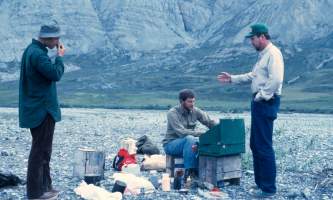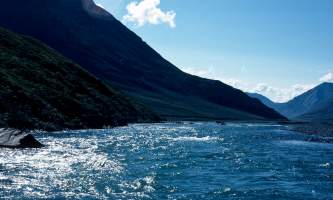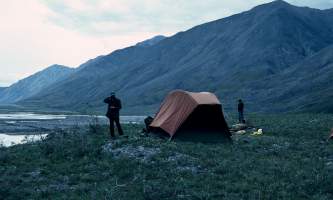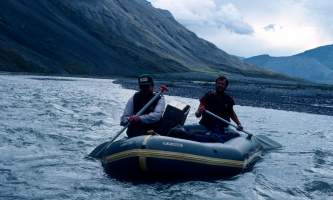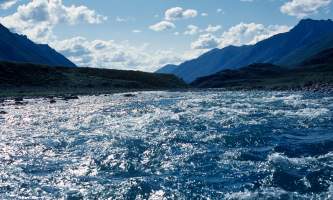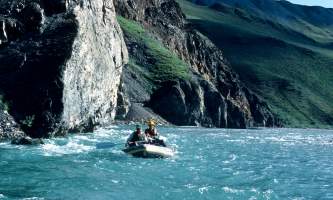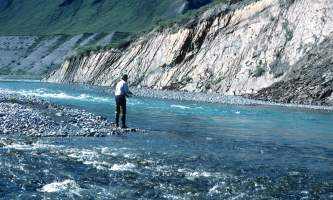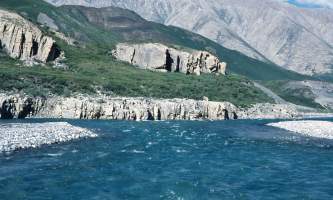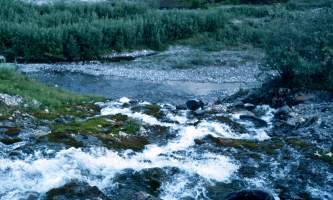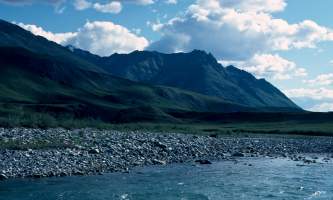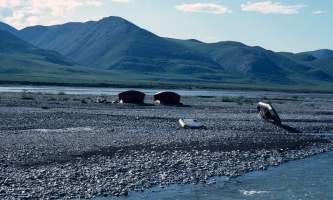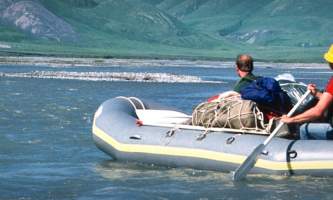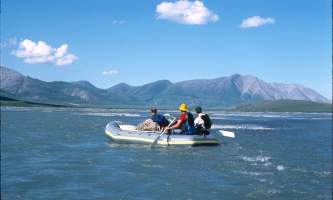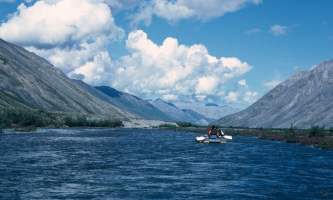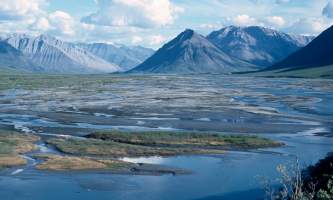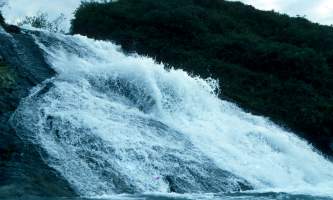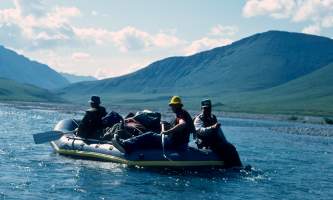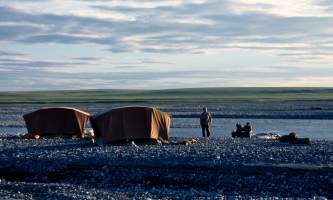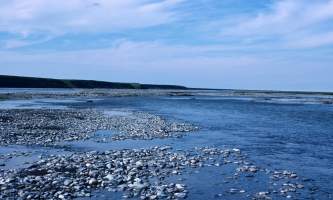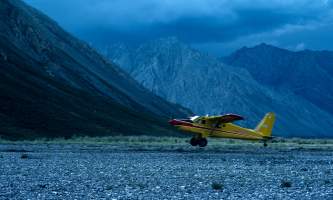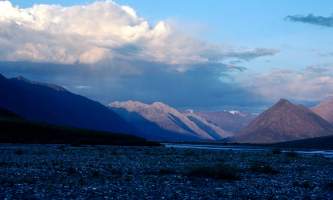Why Float This River
The Canning River is an arctic river that flows north out of the beautiful Phillip Smith Mountains and forms the western boundary of the Arctic National Wildlife Refuge and is an ideal river for small boats and for those not interested in challenging whitewater. It is a wide river valley formed by the glaciers that once flowed down from the high peak of Mt Chamberlain, the second highest mountain in the Brooks Range. It is a meandering river with few major obstacles except choosing the channel that has the deepest water. The water levels are sometimes very low but a 14-foot raft can make it through the braided channels and an inflatable kayak is sometimes the boat of choice.
For a guided option, head out with Expeditions Alaska on a 7-12 day guided journey through the Arctic National Wildlife Refuge.
Put In
The usual put in for this trip is gravel strip on the right side of the river about 25 miles above the confluence with the Marsh Fork. It is a lovely camping area and has several outstanding hiking options into the limestone mountains of this region. Another option would be to start your trip at the gravel strip just below Plunge Creek at GPS N 69 degrees and 16.8 minutes by W 146 degrees and 01.4 minutes.
Take Out
There are a couple of options for the take out. For anyone with limited time the river left gravel strip below Plunge Creek is the first option and is only 30 miles below the put in. For those interested in a longer trip there is a good tundra bench strip located 65 miles below the put in and 45 miles below the Marsh Fork confluence. It is an easily spotted location at GPS N 69 degrees and 52.7 minutes by W 146 degrees and 02.3 minutes. There is a structure/weather station that is easily seen from the river and a gravel bar just above the strip where gear can be unloaded for the carry to the strip.
The Trip
Put In to Plunge Creek Strip: 30 miles
The put in on the upper Canning River is a dramatic place, located just after the river makes the big dogleg turn to the south as it circles the base of the Franklin Mountains. This is an area where one could spend a few days, as the hikes up into the mountains are very dramatic. The river is quite braided along here and due to the sometimes low water, the biggest challenge is figuring out which channel to take when it splits, as it does often. It is braided the entire way and the run down to the confluence with the Marsh Fork is about 25 miles as the GPS flies. Below the confluence the river comes together forming a main channel at times while other times it is a complicated maze of channels. There are great views of the Franklin Mountains that form the right side of the valley. It is only 5 miles from the confluence to Plunge Creek where there is an often-used airstrip on the left side of the river after the black cliffs and below the mouth of Plunge Creek. There are several nice lakes to hike to from this area.
Plunge Creek to Standard Take Out: 45 miles
Below Plunge Creek, the river runs slightly NNW and is a braided network of channels the whole way. There are many nesting birds of prey including Peregrine and Gyrfalcons as well as Golden Eagles and Rough Legged Hawks. The fact that the river forms the western boundary of ANWR means that signs of occasional oil development can be seen. But, there are still chances to see bear, moose, caribou, wolves and musk oxen through this stretch. The take out here is at GPS N 69 degrees and 52.9 minutes by W 146 degrees and 23.3 minutes and is an area where the river comes together into one main channel.
Canning River GPS Coordinates
Plunge Creek
Put in here by wheelplane at the gravel strip. Put in/Take out option for Canning River.
69.26888900, -146.01777800
Tundra Bench Strip
There is a structure/weather station that is easily seen from the river and a gravel bar just above the strip where gear can be unloaded for the carry to the strip. Put in/Take out option for Canning River.
69.86861100, -146.03416700
Canning River & Marsh Fork Confluence
The usual put in for this trip is a wheelplane at the gravel strip on the right side of the river about 25 miles above the confluence with the Marsh Fork. It is a lovely camping area and has several outstanding hiking options into the limestone mountains of this region. Put in option for Canning River.
69.20000000, -145.85000000
USGS Maps
Arctic C-4, C-5, D-4
Mount Michelson A-3, A-4, B-4, C-4, D-4, D-5
Distance
30-75 miles
Days
3-4
Difficulty
Easy
Class
I, II
Craft
Kayak
Raft
Cost
$$$


